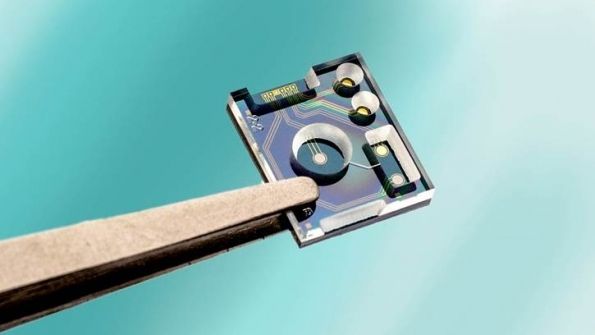The Chemical Tests of the Future Could Move onto Chips
Published on by Water Network Research, Official research team of The Water Network in Technology
Marcel Zevenbergen imagines chemical sensors that are the size of a fingernail, measure chloride levels in a farm’s water supply, and stream data wirelessly for months.

(Image courtesy of Imec and the Holst Centre).
These are not the cattail-shaped electrodes and analytical machines that scientists have traditionally used to measure chemicals in fluid.
Zevenbergen is a senior researcher at the Holst Centre, a Dutch microelectronics lab where engineers are trying to shrink such chemical sensors down into silicon chips. These devices largely missed out on the falling cost and dimensions of other sensors for measuring pressure or temperature.
Founded in 2005, the Holst Centre is the result of a partnership between the Netherlands Organization for Applied Scientific Research and Imec, a leading microelectronics research center in Belgium. It is trying to bring the same transformative advances to sensors as Imec has done with some of the world’s smallest and most sophisticated computer chips.
At the IEEE International Electron Devices Meeting last month in San Francisco, Zevenbergen and his colleagues showed a new chemical sensor that dwarfs other devices built with ion-selective membranes, the gold standard for measuring chemicals in fluid. The big news is that it's small enough to be integrated on a circuit board with computers and wireless transmitters.
The advance could make it possible for the tiny parts to have the same lifespan and accuracy as ion-selective sensors, which contain electrodes that react with ions floating in fluids, generating an electric current based on the reaction's intensity. That would make them useful for large networks of wireless sensors on farms, hospitals, or factories.
In an interview, Zevenbergen said that the challenge has been slowing how fast the sensors' electrodes break down, causing their readings to drift. The sensors typically only last three to six months before they must be cleaned, recalibrated, or replaced. Making the reference electrode smaller has meant that it breaks down faster.
The problem is with the reference electrode, which connects to the membranes that interact with chemicals dissolved in the fluid to measure the concentration. A voltage created from the chemical reaction at the membrane is compared to the behavior of the reference electrode. The electrode can also be compromised by temperature, light, or contaminants.
Typically, the reference electrode contains a reservoir filled with around 10 milliliters of electrolyte that slowly leak out of the sensor and cause drift. But the Holst researchers carved a tiny channel in the reference electrode to better hold onto the electrolyte. The other benefit: the sensor only needs 10 microliters.
The “microfluidic channel” acts like a contact between the reference electrode and iridium oxide and silver chloride membranes, which measure for acidity and chloride, respectively. Hardly anything will slosh out of the channel, Zevenbergen said, allowing the sensor readings to remain stable as long as larger devices.
The result is that the devices can be fabricated on silicon substrates much smaller than previously thought. They also have the same or better accuracy, said Zevenbergen. Potentially, the sensors can be produced at lower costs, too.
Holst researchers are far from the only ones trying to etch fluid sensors into silicon. In 2014, researchers at the Vienna University of Technology made a prototype sensor using miniaturized laser technology to cast infrared light into fluid.
The sensor measured chemicals by detecting the presence of molecules – like oxygen in a newborn’s blood – that absorb the light.
Holst’s sensors are still in the early stages. Zevenberg said that he was working with several companies on the pre-competitive research, though declined to name names. But, he said, that the new advance could have wide implications beyond chloride and acidity sensors.
One idea, he said, was to integrate sodium sensors into vests that detect symptoms of dehydration in an athlete’s sweat. Another is using the sensors on farmland to measure soil nutrients.
Source: Electronic Design
Media
Taxonomy
- Treatment
- Technology
- Sensor Systems
- Data Management
- Water Supply
- Electronics
- Sensors
- Chips